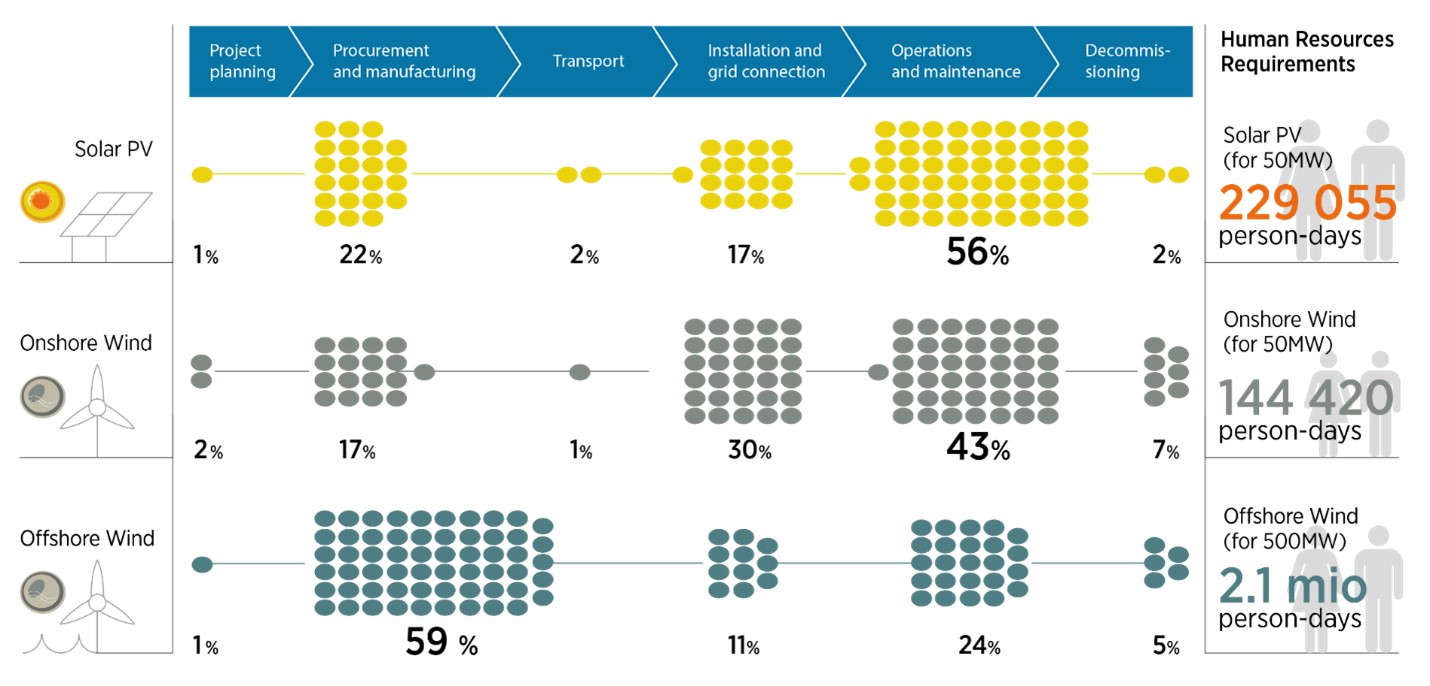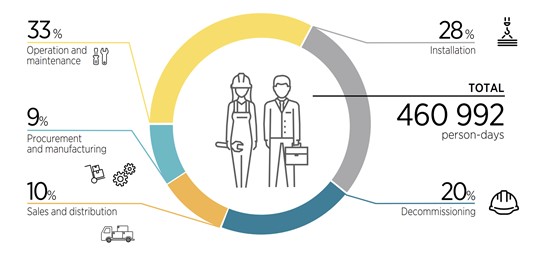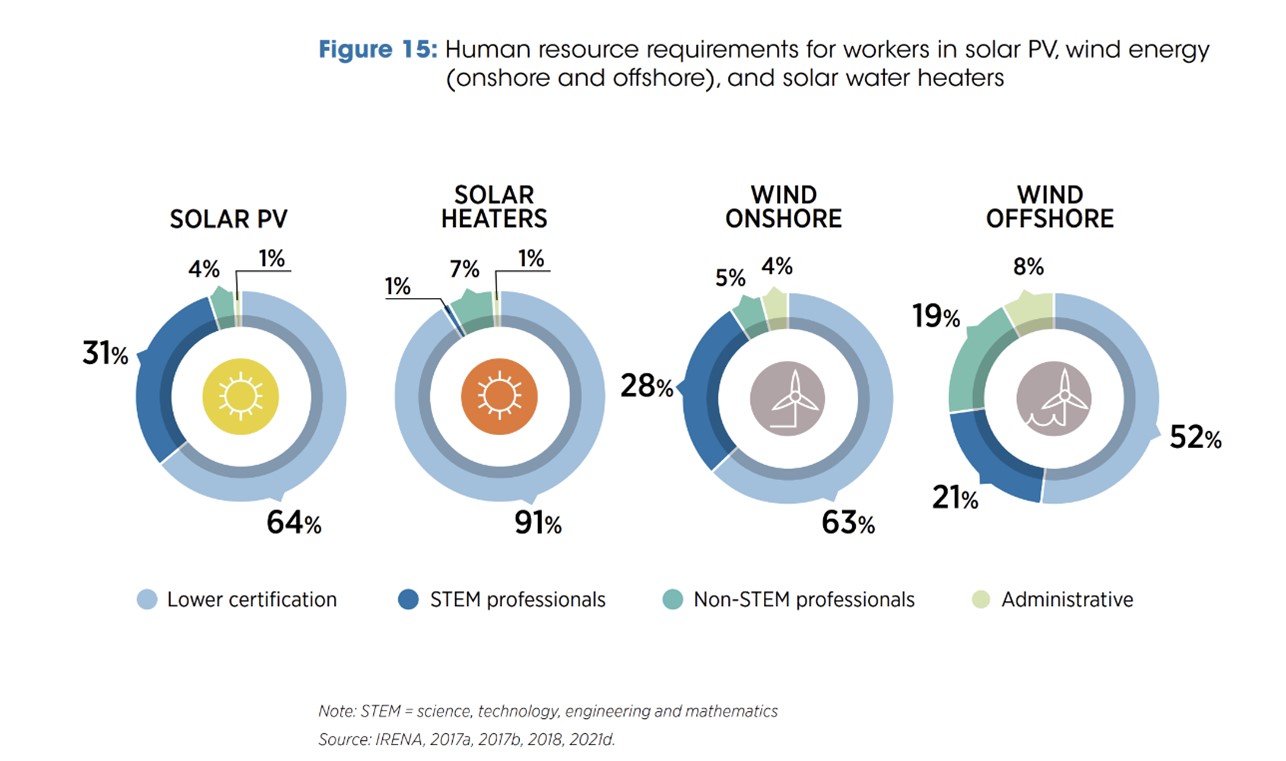Overview
Renewable energy development can drive economic growth, create new jobs and enhance human health and welfare at the national level. The Leveraging Local Capacity series examines the kinds of jobs created and suggests ways to build on existing industries. Each study outlines the requirements along the whole value chain, particularly in terms of human resources and skills, to produce, install and operate plants or facilities based on a specific renewable energy technology.
Analysis of local capacities and skills
IRENA analysis show that from project planning to manufacturing, and from construction and installation to operations and maintenance, renewable energy projects offer considerable potential.

- For a typical 50 MW solar PV, a total of about 230,000 person-days are required along the value chain.
- For a 50 MW onshore wind project, 144,000 person-days are required.
- A 500 MW offshore wind requires over 2.1 million person-days. Given similarities with offshore O&G industry, some relevant skills could be transferred with appropriate policies and training.
The highest labor requirements are in operations and maintenance, followed by procurement and manufacturing , and construction and installation.
Small-scale renewable energy offer plenty opportunities as well. IRENA’s solar water heater (SWH) analysis indicates that the manufacturing, planning, installation and decommissioning of small-scale solar water heater systems for 10 000 single-family households 1 requires more than 460 000 person-days. Operation and maintenance work is needed throughout the lifetime of a system and therefore represents a large chunk of the labour required (33%) . Installation (28%) and decommissioning (20%) are the next largest shares, followed by sales and distribution (10%) and procurement and manufacturing (9%). In other words, countries that do not manufacture equipment domestically can achieve job creation in other segments of the value chain.

Renewable energy employs people across all trades and levels. IRENA’s analysis of the human resource requirements for the solar PV and onshore wind industries shows that over 60% of the workforce requires minimal formal training. Individuals with degrees in fields such as science, technology, engineering and mathematics (STEM) are needed in smaller numbers (around 30%). Highly qualified non STEM professionals (such as lawyers, logistics experts, marketing professionals or experts in regulation and standardisation) account for roughly 5%, while administrative personnel make up the smallest share (1 4%). In onshore wind, the proportion is similar: those with lower skills and training again represent the largest share of employment (47%). When it comes to the value chain of SWHs, less than 10% of the human resources required are for STEM and non-STEM professionals. In comparison, the remaining 90% required are workers with minimal or no certification. In other words, the bulk of the labour needed involves mostly low- to medium-level technical skills easily available in any country’s workforce.

In addition to these four technologies, more analyses are in preparation. They other insights into the types of jobs needed to support the transition by technology, segment of the value chain and educational and occupational requirements. These are crucial elements to inform the transition’s policy framework.
The analysis also involves assessing the materials and equipment needed in each segment, with a focus on identifying the potential for local value creation, and synergies with existing industries that could potentially leverage the existing capabilities.














